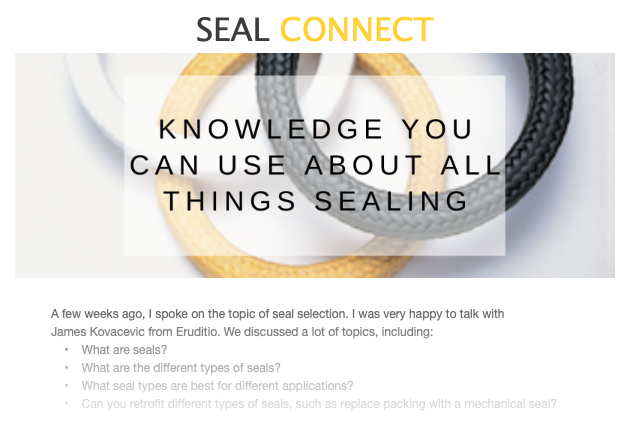Industry Podcast Discusses Pulp and Paper Sealing Reliability
 SEPCO’s own director of market development, Chuck Tanner, recently spoke with James Kovacevic at Eruditio for a new episode of the “Rooted in Reliability” podcast. During their chat, they discussed the benefits of fluid sealing reliability in the pulp and paper industry.
SEPCO’s own director of market development, Chuck Tanner, recently spoke with James Kovacevic at Eruditio for a new episode of the “Rooted in Reliability” podcast. During their chat, they discussed the benefits of fluid sealing reliability in the pulp and paper industry.
Because of the 25 years of experience under Chuck’s belt, he was the ideal industry professional to discuss sealing challenges and solutions within this industry.
Among the topics covered in this conversation are:
- What is sealing?
- Why is pulp and paper sealing hard?
- How do we overcome contamination?
- Do successful organizations have good maintenance programs for seals to improve reliability?
- What does a typical pulp and paper facility get out of a seal set?
- Is the air sealing technology suitable for slurry sealing systems?
What Is Fluid Sealing?
Using a device, sealing prevents some fluid or gas from reaching the atmosphere. Further, seals are very important for containing machine fluids and keeping them from contamination. Effective fluid sealing provides a mechanical device to control leakage between two joining surfaces. Gaskets seal stationary surfaces. In the same vein, dynamic surfaces use a device to seal two moving objects.
How Can the Pulp and Paper Industry Benefit from Effective Sealing Methods?
The predominant process sealed in the pulp and paper industry is slurries. As a result, there are many slurry types within a pulp and paper production facility, including white, black, and green liquors. Alternately, others sealed are the actual fiber slurries or paper stock slurries.
However, slurries in fluid sealing don’t provide a lubricating film between dynamic and stationary surfaces. Unfortunately, because slurries are slurries are very abrasive, they may damage sleeves and seal faces.
In conclusion, you can learn more by reading the full Q&A and listening to the conversation here.
 SEAL CONNECT
SEAL CONNECT Find Your Sealing Solution
Find Your Sealing Solution